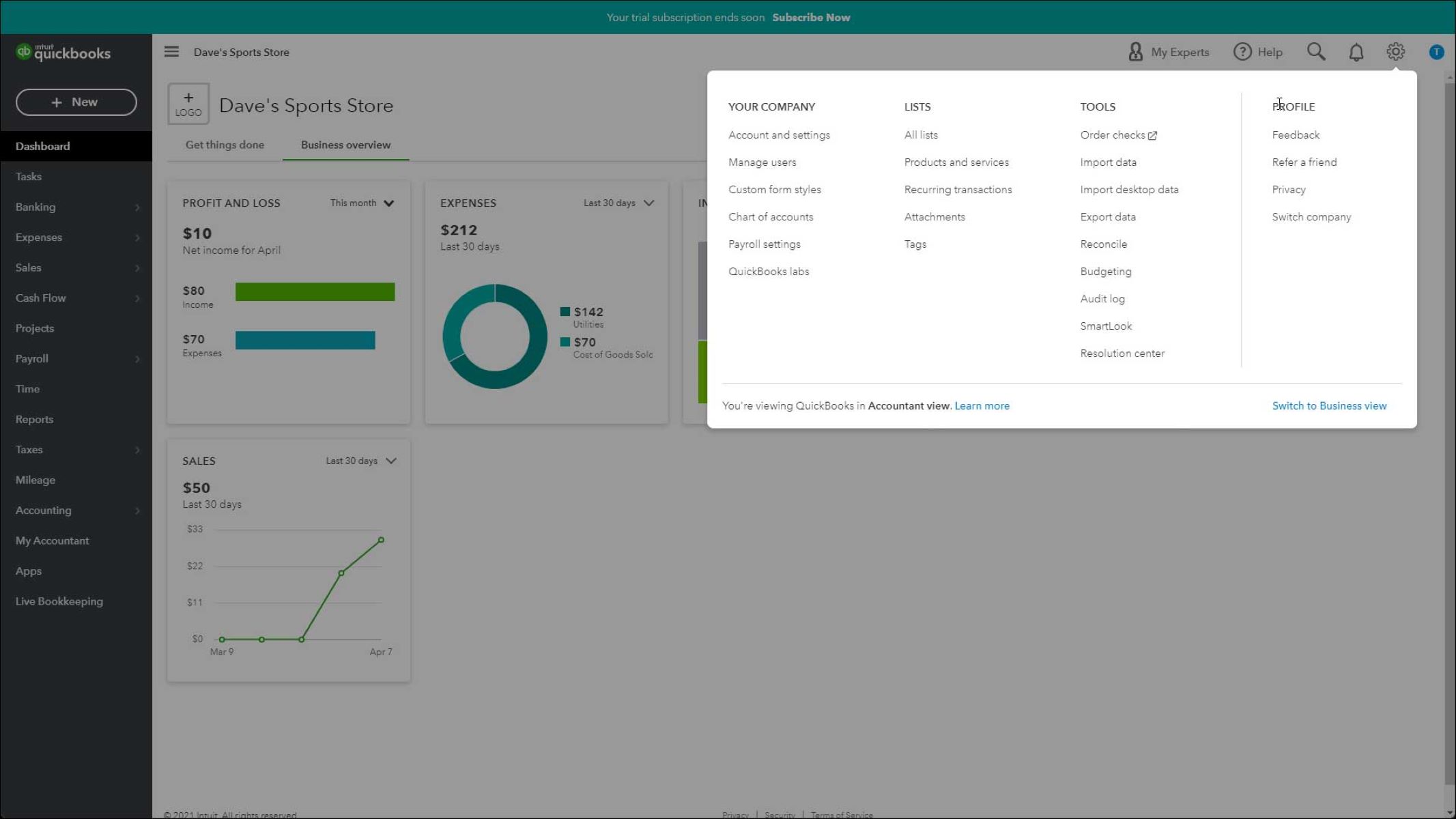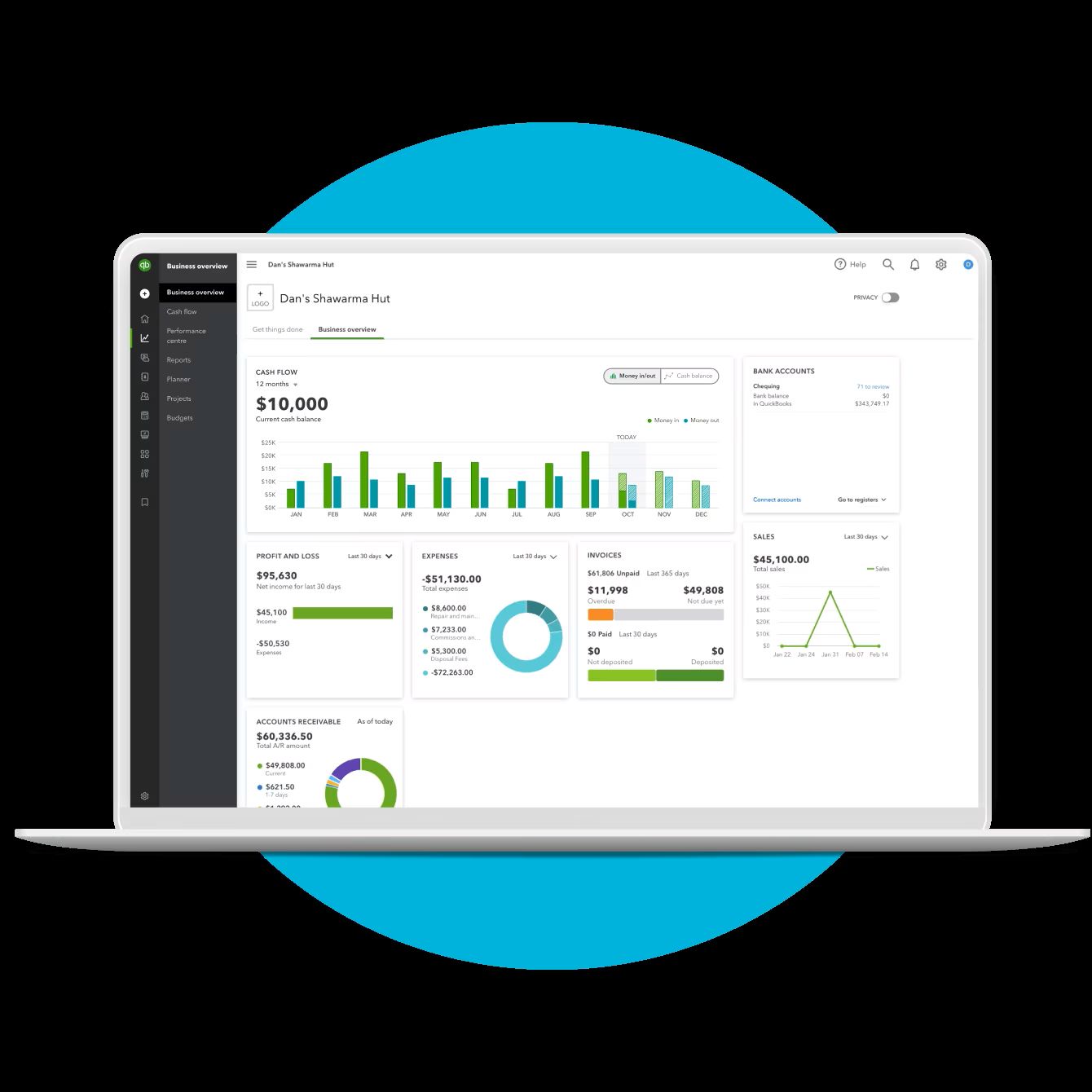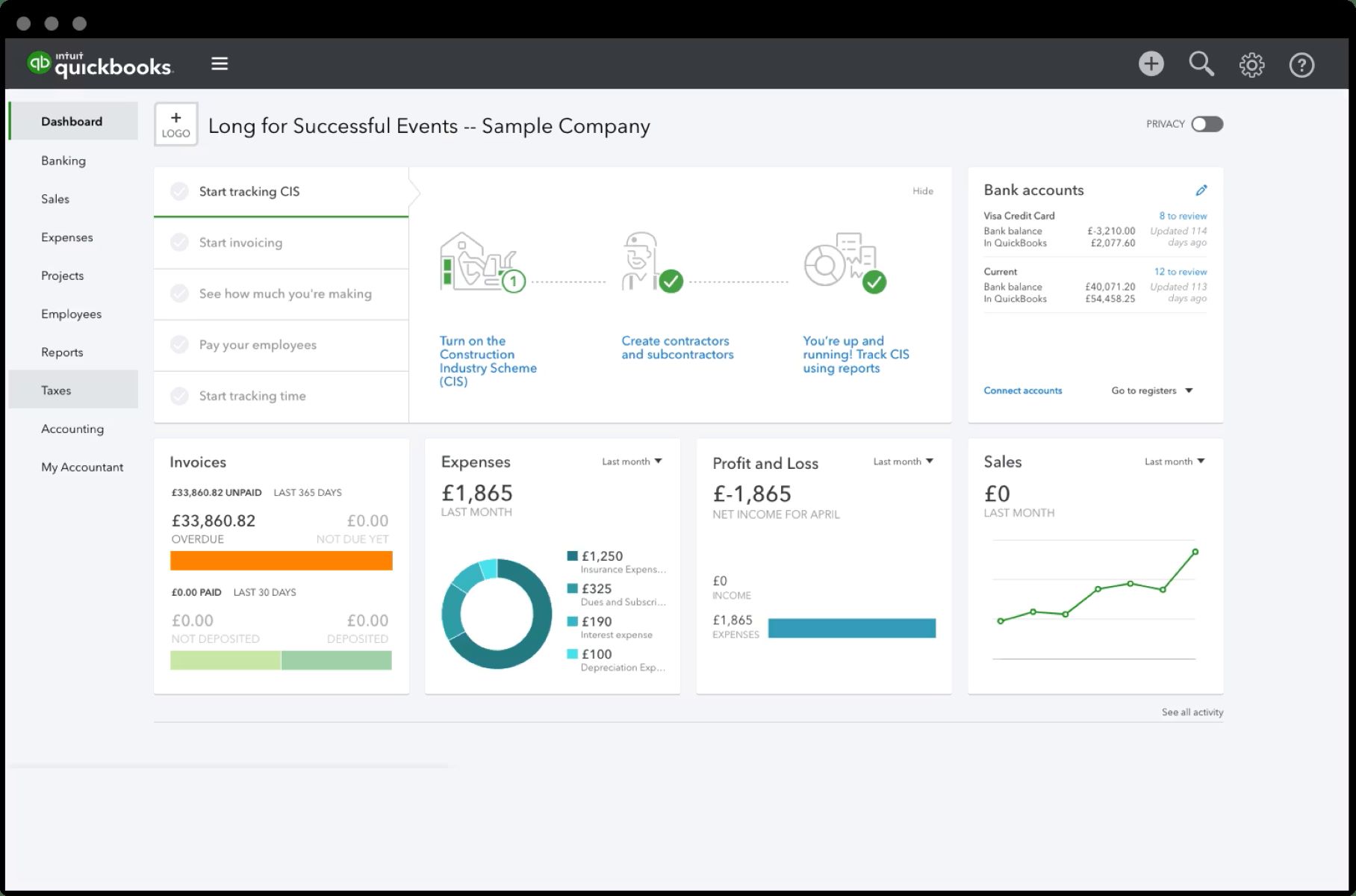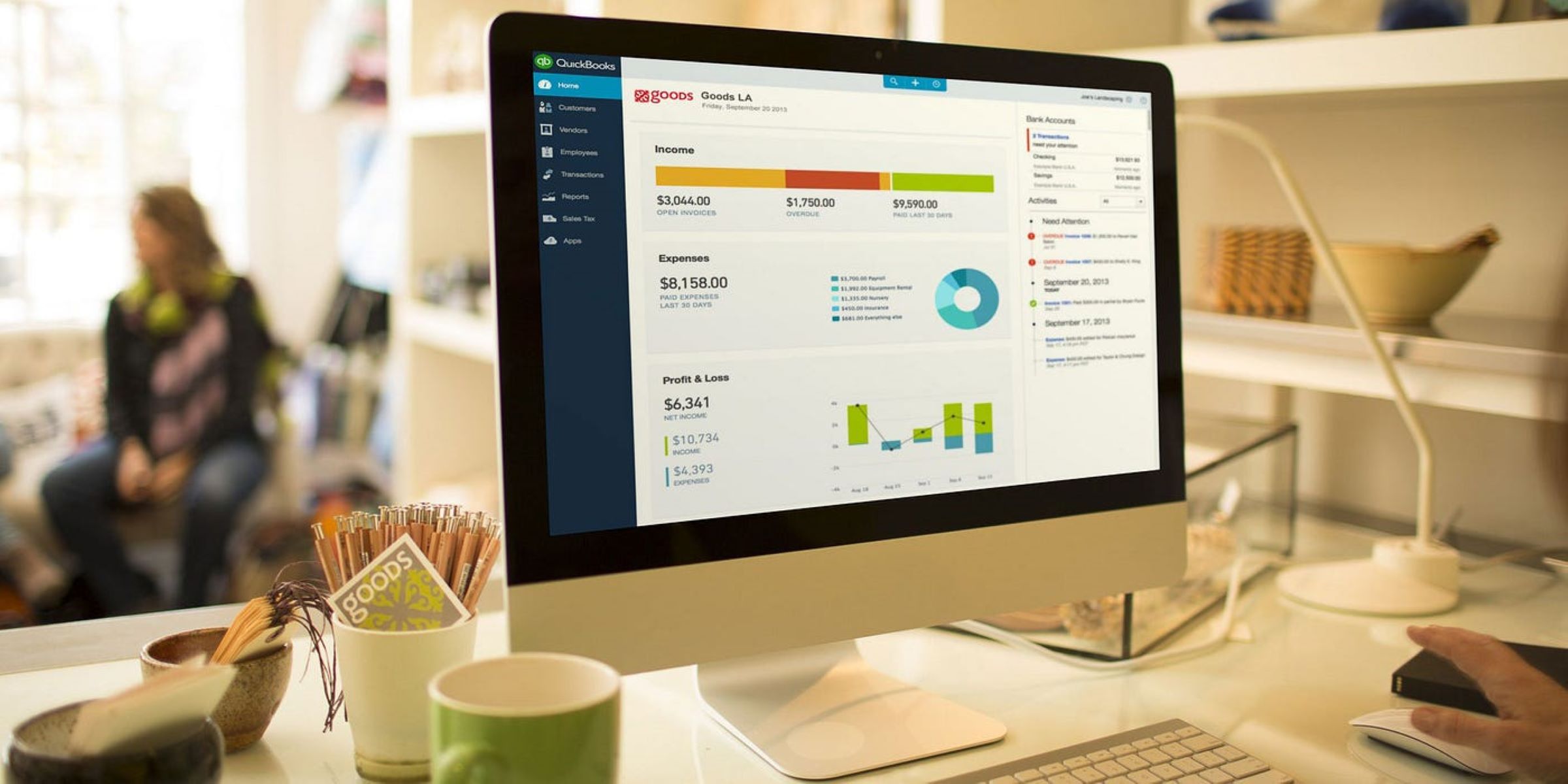Introduction
Welcome to this guide on how to import bank transactions into QuickBooks Desktop. Keeping track of your financial transactions is crucial for managing your business effectively, and QuickBooks Desktop provides a convenient way to do this. By importing your bank transactions directly into QuickBooks Desktop, you can save time and reduce the risk of manual errors.
Manually entering every bank transaction can be time-consuming and tedious, especially if you have a high volume of transactions. Thankfully, QuickBooks Desktop offers features that allow you to download and import your bank transactions in a few simple steps.
In this guide, we will walk you through the process of setting up bank feeds in QuickBooks Desktop, downloading your bank transactions, and importing them into your QuickBooks company file. We will also cover how to match and categorize imported transactions, review and reconcile them, and troubleshoot any common issues you may encounter along the way.
Note that the specific steps and options may vary depending on the version of QuickBooks Desktop you are using and the financial institutions you have accounts with. However, the general principles and concepts discussed in this guide are applicable to most scenarios.
Before we dive into the details, it is important to ensure that you have the necessary access credentials for your online banking accounts. You will need your username and password to connect your bank accounts to QuickBooks Desktop and download your bank transactions. If you don’t have this information readily available, please contact your bank to obtain it.
Now, let’s get started with setting up bank feeds in QuickBooks Desktop and importing your bank transactions to streamline your financial management process!
Section 1: Setting Up Bank Feeds in QuickBooks Desktop
Before you can import bank transactions into QuickBooks Desktop, you’ll need to set up bank feeds, also known as online banking. Bank feeds allow you to connect your bank and credit card accounts to QuickBooks Desktop and download your transactions directly from your financial institution.
To set up bank feeds, follow these steps:
- Open QuickBooks Desktop and navigate to the Banking menu.
- Select Bank Feeds and then choose Set Up Bank Feeds.
- In the Set Up Bank Feeds window, search for your financial institution by name or by entering your bank’s website URL. If your financial institution is not listed, you may need to contact them to check if they support QuickBooks bank feeds.
- Select your financial institution from the search results and click Next.
- Enter your online banking username and password and click Connect.
- Follow the on-screen instructions to complete the authentication process set by your financial institution. This may include answering security questions or receiving a verification code.
Once your bank feed is set up and connected to your QuickBooks Desktop, you’ll be able to download your bank transactions directly into your company file.
Note that the availability of bank feeds and the specific options may vary depending on your financial institution. Some banks may charge a fee for accessing bank feeds or have limitations on the number of transactions you can download.
When setting up bank feeds, it’s important to ensure that the accounts in your QuickBooks Desktop match the accounts at your financial institution. This will help ensure that the downloaded transactions are assigned to the correct accounts in QuickBooks. If you haven’t already done so, you can set up and link your existing accounts or create new accounts directly from the Set Up Bank Feeds window.
Setting up bank feeds in QuickBooks Desktop provides a seamless and efficient way to import your bank transactions. In the next section, we will explore how to download these transactions from your financial institution.
Section 2: Downloading Bank Transactions
Now that you have successfully set up bank feeds in QuickBooks Desktop, it’s time to download your bank transactions. The process may slightly vary depending on your financial institution and the version of QuickBooks Desktop you are using. However, the following steps will give you a general idea of how to download your bank transactions:
- Navigate to the Banking menu in QuickBooks Desktop.
- Select Bank Feeds and then choose the bank or credit card account from which you want to download transactions.
- Click on the Download Transactions button or a similar option available in your QuickBooks version.
- Specify the date range for the transactions you want to download. You can choose a specific date range or select options like Last 90 Days or All. Keep in mind that some financial institutions may have limitations on how far back you can download transactions.
- Click on the Download button to initiate the download process.
- Depending on your financial institution and the number of transactions, the download may take a few moments. Once completed, you should see the downloaded transactions displayed in QuickBooks Desktop.
In some cases, you may need to review and resolve any potential conflicts or duplicate transactions before accepting the downloaded transactions into your company file. QuickBooks Desktop provides options to review and edit the downloaded transactions to ensure accuracy.
Downloading your bank transactions directly into QuickBooks Desktop saves you time and reduces the chances of manual entry errors. However, it is important to review the downloaded transactions to ensure their accuracy and categorization.
In the next section, we will discuss how to import bank transactions from a CSV file, which can be useful if your financial institution does not support direct bank feeds.
Section 3: Importing Bank Transactions from a CSV file
If your financial institution does not support direct bank feeds or if you prefer to import your bank transactions from a CSV file, QuickBooks Desktop allows you to do so. Importing bank transactions from a CSV file can be beneficial when you need to import transactions from multiple accounts or when you have transactions that need to be manually categorized.
Follow these steps to import bank transactions from a CSV file into QuickBooks Desktop:
- Ensure that your bank transactions are saved in a CSV file format. Most financial institutions provide the option to export transactions in CSV format, so check with your bank for specific instructions.
- In QuickBooks Desktop, navigate to the Banking menu and select Bank Feeds.
- Choose the bank or credit card account that you want to import transactions to.
- Click on the File menu and select Import/Export.
- In the Import Transactions window, choose CSV file as the file type to import.
- Click on Browse to locate and select the CSV file containing your bank transactions.
- Once you have selected the file, click Open to start the import process.
- QuickBooks Desktop will prompt you to map the columns in the CSV file to the corresponding fields in QuickBooks. Ensure that the columns are correctly mapped to the appropriate fields.
- Review the transactions before importing them and make any necessary adjustments or categorizations.
- Click on Import to import the transactions into your QuickBooks company file.
After importing the bank transactions from the CSV file, QuickBooks Desktop will match them to existing transactions or create new ones, based on the information provided. Review the imported transactions to ensure their accuracy and make any necessary edits or categorizations.
Importing bank transactions from a CSV file gives you flexibility and control over the categorization and organization of your transactions. However, it’s important to verify the accuracy and consistency of the data in the CSV file before importing it into QuickBooks Desktop.
In the next section, we will explore the option of importing bank transactions from supported file formats other than CSV.
Section 4: Importing Bank Transactions from Supported File Formats
In addition to importing bank transactions from CSV files, QuickBooks Desktop also supports other file formats for importing transactions. Depending on your financial institution, you may have the option to directly download transaction files in these supported formats.
Here’s how you can import bank transactions from supported file formats into QuickBooks Desktop:
- Obtain the transaction file from your financial institution in one of the supported formats. These formats may include QBO (QuickBooks Online), OFX (Open Financial Exchange), QFX (Quicken Financial Exchange), or QIF (Quicken Interchange Format).
- In QuickBooks Desktop, navigate to the Banking menu and select Bank Feeds.
- Choose the bank or credit card account to which you want to import transactions.
- Click on the File menu and select Import/Export or Import Web Connect File, depending on your QuickBooks version.
- Locate and select the transaction file in the supported format that you obtained from your financial institution.
- Click Open to start the import process.
- Review the imported transactions and make any necessary adjustments or categorizations.
- Click Import to import the transactions into your QuickBooks company file.
When importing bank transactions from supported file formats, QuickBooks Desktop will map the fields in the file to the corresponding fields in your QuickBooks company file. You may need to review and verify the mapping to ensure the accuracy of the imported transactions.
Importing bank transactions from supported file formats provides a streamlined process for bringing in transactions from your financial institution, as you won’t need to manually enter each transaction. It saves time and reduces the risk of errors.
In the next section, we will cover the crucial step of matching and categorizing the imported bank transactions in QuickBooks Desktop.
Section 5: Matching and Categorizing Imported Transactions
After importing bank transactions into QuickBooks Desktop, the next step is to match and categorize those transactions. This ensures that the imported transactions are correctly associated with the corresponding accounts and categories in your company file.
Follow these steps to match and categorize imported transactions in QuickBooks Desktop:
- Navigate to the Banking menu in QuickBooks Desktop and select Bank Feeds.
- Choose the bank or credit card account that contains the imported transactions.
- In the Bank Feeds window, you will see a list of imported transactions. QuickBooks Desktop automatically tries to match imported transactions with existing transactions in your company file.
- Review the list of transactions and manually match them with the corresponding transactions already in QuickBooks. This helps eliminate duplicates and ensures accurate record-keeping.
- If there are transactions that do not have a match, you can either create new transactions for them or select an existing transaction to match them with.
- Once all transactions are matched, categorize them by assigning the appropriate expense, income, or other account categories.
- If needed, you can also split transactions into multiple categories or assign classes for further tracking and reporting.
- Make any necessary adjustments or edits to the transaction details, such as adding memos, attaching documents, or modifying amounts.
Matching and categorizing imported transactions accurately is vital for maintaining updated and organized financial records in QuickBooks Desktop. It ensures that your financial reports reflect the correct account balances and expense/income categorization.
QuickBooks Desktop provides efficient tools and features to assist you in this process, such as batch categorization, rules to automatically categorize transactions, and the ability to save time and effort.
In the next section, we will discuss the importance of reviewing and reconciling imported bank transactions to ensure accuracy and completeness.
Section 6: Reviewing and Reconciling Imported Bank Transactions
Once you have matched and categorized the imported bank transactions in QuickBooks Desktop, it is important to review and reconcile them to ensure the accuracy and completeness of your financial records. Reconciliation is the process of comparing the transactions in your QuickBooks company file with the transactions reported by your financial institution.
Follow these steps to review and reconcile imported bank transactions in QuickBooks Desktop:
- Navigate to the Banking menu in QuickBooks Desktop and select Reconcile.
- Select the bank or credit card account that contains the imported transactions.
- Enter the ending date of the statement from your financial institution.
- Compare the transactions listed in QuickBooks with those on your statement. Check for any discrepancies, missing transactions, or errors.
- If you find any discrepancies, investigate and resolve them by reviewing transaction details or contacting your financial institution if necessary.
- Mark the transactions as cleared in QuickBooks, indicating that they have been reconciled with your statement.
- If all transactions match and there are no discrepancies, you can proceed to complete the reconciliation process.
- Review the reconciliation summary and generate reconciliation reports for your records.
Regularly reviewing and reconciling your imported bank transactions in QuickBooks Desktop ensures that your financial records are accurate and up to date. It helps identify any errors, fraud, or missing transactions, which allows for prompt resolution and a clear understanding of your business’s financial position.
Reconciliation also helps maintain the integrity of your financial reports and provides a reliable audit trail for your accounting processes. It is a crucial step in ensuring financial transparency and effectively managing your business’s cash flow.
In the next section, we will address some common issues that may arise during the process of importing and reconciling bank transactions in QuickBooks Desktop.
Section 7: Troubleshooting Common Issues
While importing and reconciling bank transactions in QuickBooks Desktop is generally a smooth process, there are some common issues that you may encounter. Understanding and troubleshooting these issues can help ensure a seamless financial management experience:
- Missing or duplicate transactions: Sometimes, imported bank transactions may be missing or duplicated in QuickBooks Desktop. To address this, double-check your import settings and verify that the transactions were imported correctly. You can also review your bank statement and compare it with the transactions in QuickBooks to identify any discrepancies.
- Incorrect categorization: Imported transactions may not always be categorized correctly, especially if the categorization was not specified during the import process. To resolve this, manually review and categorize each transaction based on its nature and purpose. You can also set up rules in QuickBooks to automatically assign categories to certain types of transactions.
- Connection issues with your financial institution: Occasionally, you may encounter errors or connectivity issues when trying to download or import transactions from your financial institution. Ensure that your internet connection is stable and verify that your online banking credentials are correct. If the issue persists, contact your bank or financial institution’s support for assistance.
- Unreconciled transactions: It is important to regularly reconcile your imported bank transactions with your financial institution’s statements. If you have unmarked or uncleared transactions in QuickBooks, it can lead to discrepancies and inaccurate financial reporting. Ensure all transactions are properly marked as cleared or reconciled to avoid any confusion.
- Mismatched transaction details: Sometimes, the details of imported transactions, such as dates, amounts, or payees, may not match with the corresponding bank statement. In such cases, carefully review the transaction details and compare them with the statement to identify any discrepancies. Make necessary adjustments in QuickBooks to ensure accurate record-keeping.
By being aware of these common issues and troubleshooting them effectively, you can ensure the accuracy and reliability of your imported bank transactions in QuickBooks Desktop.
Closely monitoring and addressing any issues that arise during the import and reconciliation process will help you maintain accurate financial records and make informed business decisions.
With the knowledge gained from this guide, you are well-equipped to import, reconcile, and manage your bank transactions in QuickBooks Desktop effectively.
Conclusion
Managing your bank transactions efficiently is essential for maintaining accurate financial records in QuickBooks Desktop. By following the steps outlined in this guide, you can successfully import, categorize, reconcile, and troubleshoot common issues related to your bank transactions in QuickBooks Desktop.
We started by setting up bank feeds, allowing you to connect your financial institution to QuickBooks Desktop and facilitate the download of your transactions directly into your company file. Whether you choose to import transactions from a CSV file or supported file formats, QuickBooks Desktop provides flexible options to streamline this process.
After importing your bank transactions, it is crucial to review and reconcile them with your financial institution’s statements. This step ensures the accuracy of your financial records and identifies any discrepancies or missing transactions.
In the event that you encounter common issues, such as missing or duplicate transactions, incorrect categorizations, connectivity problems, or mismatched transaction details, the troubleshooting steps provided can help resolve these challenges effectively.
By following these best practices and leveraging the capabilities of QuickBooks Desktop, you can save valuable time, reduce errors, and have a comprehensive overview of your business’s financial health.
Remember, it is important to stay up to date with the latest features and updates in QuickBooks Desktop to make the most of its capabilities for managing your bank transactions. Regularly reviewing and maintaining accurate financial records will provide you with valuable insights and enable informed decision-making.
We hope this guide has been helpful in guiding you through the process of importing and managing your bank transactions in QuickBooks Desktop. As you continue to utilize these techniques, you’ll become more proficient in managing your financial data effectively, thereby enhancing your business’s success.
Now, go forth and confidently manage your bank transactions in QuickBooks Desktop, knowing that you have the knowledge and tools to do so with ease!

























